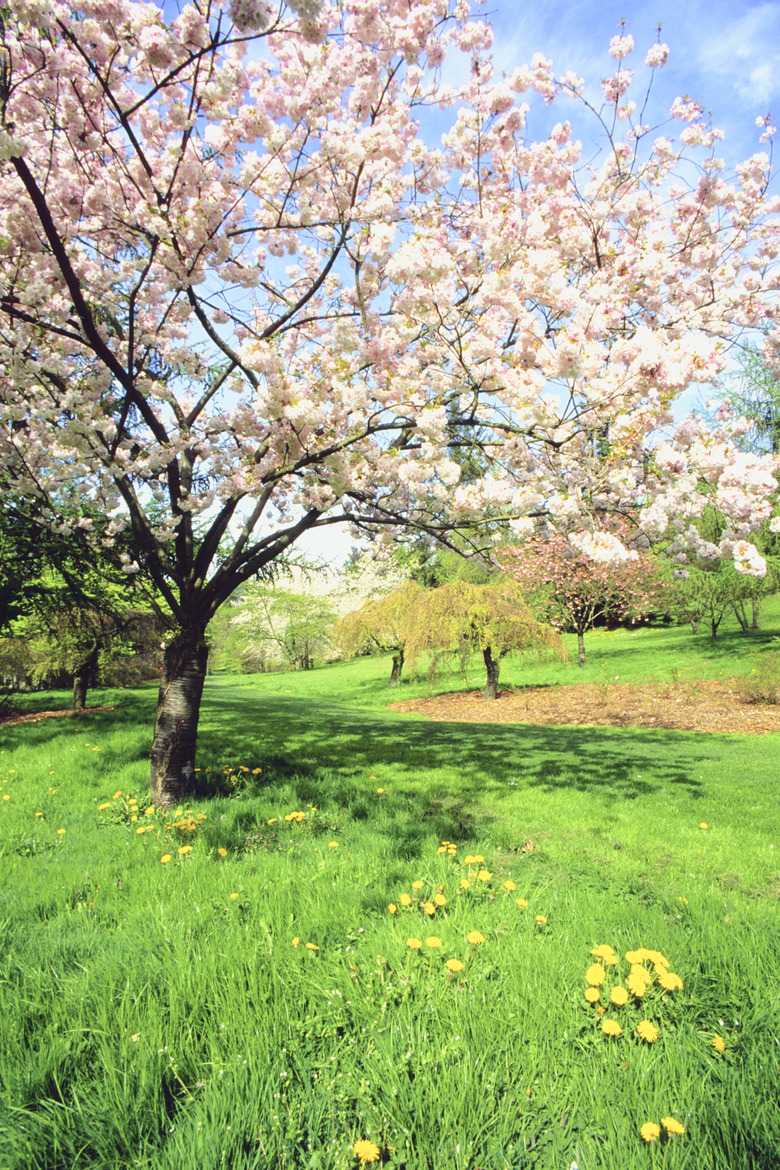Do Pink Lady Apple Trees Need A Pollinator?
"Pink Lady" (Malus domestica "Pink Lady") was developed by John Cripps in the 1970s as a cross between "Golden Delicious" (Malus domestica "Golden Delicious") and "Lady Williams" (Malus domestica "Lady Williams"). This apple is valued for its sweet, but tart flavor, crunch and pink skin. The patented apple's real cultivar name is "Cripps Pink," but it is marketed as "Pink Lady." No matter what you call it, you'll need an additional tree to pollinate it in your home orchard.
Step 1
"Pink Lady" apple trees, like most apple varieties, are self-sterile and must be grown with another apple variety to produce fruit. The blossoms are visited by bees, which transfer pollen from one apple tree to the other, causing pollination and fertilization. Without a pollinator tree, you'll get little if any fruit.
Choosing a Pollinator
Step 1
When selecting a pollinator for "Pink Lady" apples, choose a variety with a similar bloom time. "Pink Lady" has a long bloom time, so finding a suitable cultivar isn't difficult. "Braeburn" (Malus domestica "Braeburn") hails from New Zealand and is one of the latest ripening varieties you'll find. Another one to try is "Wolf River" (Malus domestica "Wolf River"), an heirloom variety known for its large, flavorful fruit and resistance to scab and mildew. For long storing baking apples, try "Melrose" (Malus domestica "Melrose"). These tart apples will store for six months or more in cold storage. All of these varieties grow in USDA plant hardiness zones 4 through 9.
Step 2
Step 3
- "Pink Lady" apple trees, like most apple varieties, are self-sterile and must be grown with another apple variety to produce fruit.
- Another one to try is "Wolf River" (Malus domestica "Wolf River"), an heirloom variety known for its large, flavorful fruit and resistance to scab and mildew.
Planting Distance
Step 1
Because apple trees are pollinated by bees rather than wind, it's important to plant the trees fairly close together. Plant "Pink Lady" apple trees no more than 100 feet away from a pollinator tree. Keep dandelions and other flowering weeds mowed down so bees aren't drawn to them instead of the apple trees. It's also a good idea to plant flowering perennial and annual beds away from your home orchard.
Growing Conditions
Step 1
When selecting a pollinator tree for "Pink Lady," choose one that has similar growing requirements. "Pink Lady" was developed in western Australia and thrives in hot climates. Although hardy in U.S. Department of Agriculture plant hardiness zones 4 through 9, it performs best in areas with mild winters and hot summers. Most apple varieties need several months of chilling winter temperatures to break dormancy and produce fruit. "Braeburn," which was developed in New Zealand, is a good option because it grows well in mild climates.
Step 2
- Because apple trees are pollinated by bees rather than wind, it's important to plant the trees fairly close together.
References
- Raintree Nursery 2013: Apples
- Orange Pippin: Pink Lady Apples
- Post Harvest: Horticultural Crop Names and Alternate Names
- Orange Pippin: Braeburn Apples
